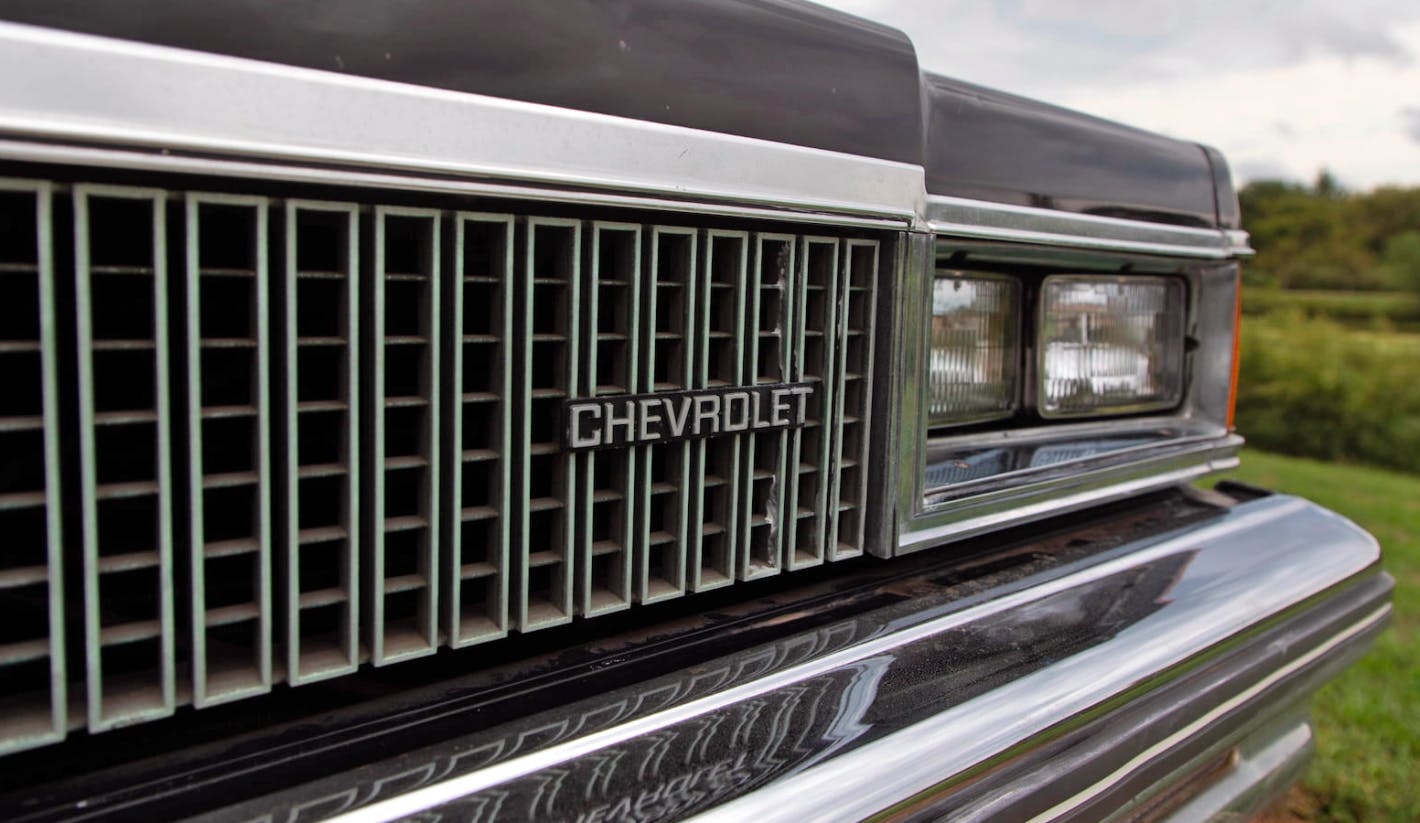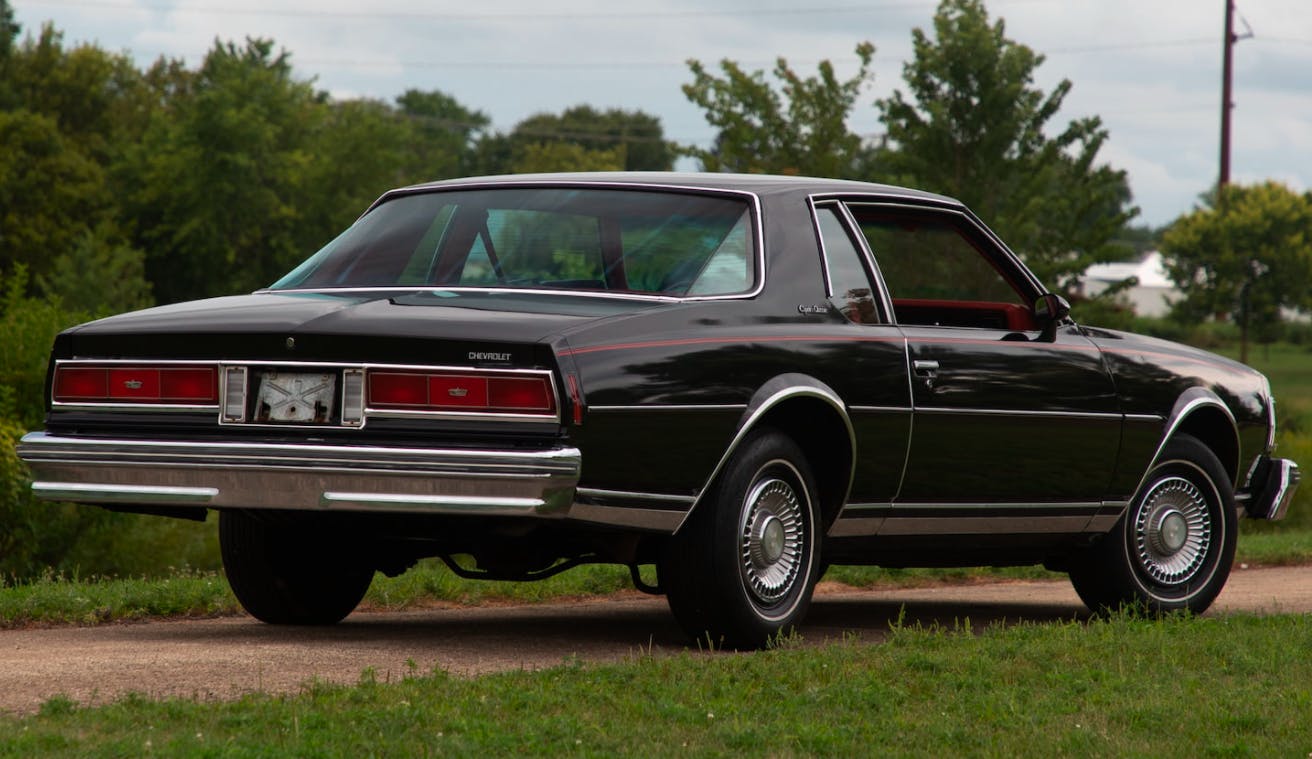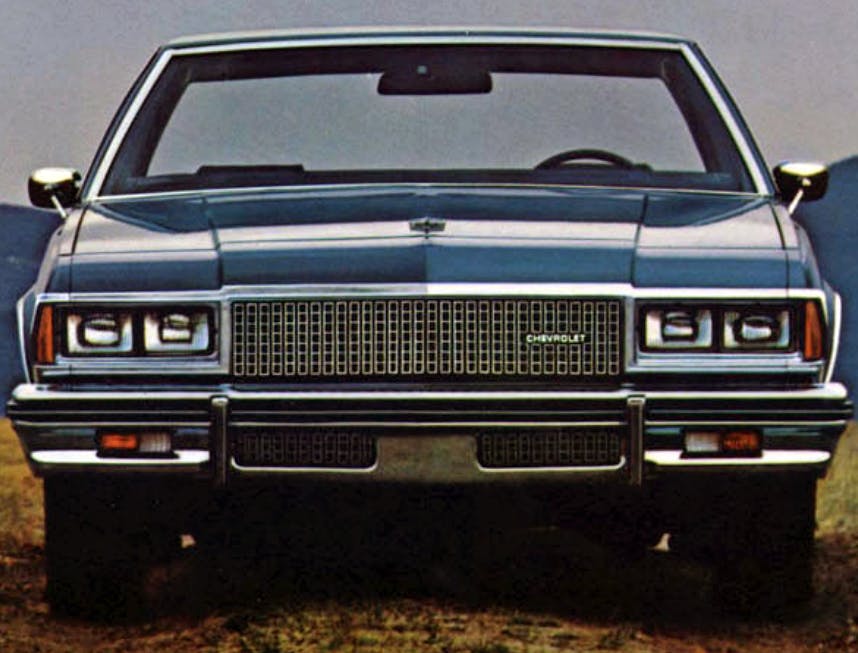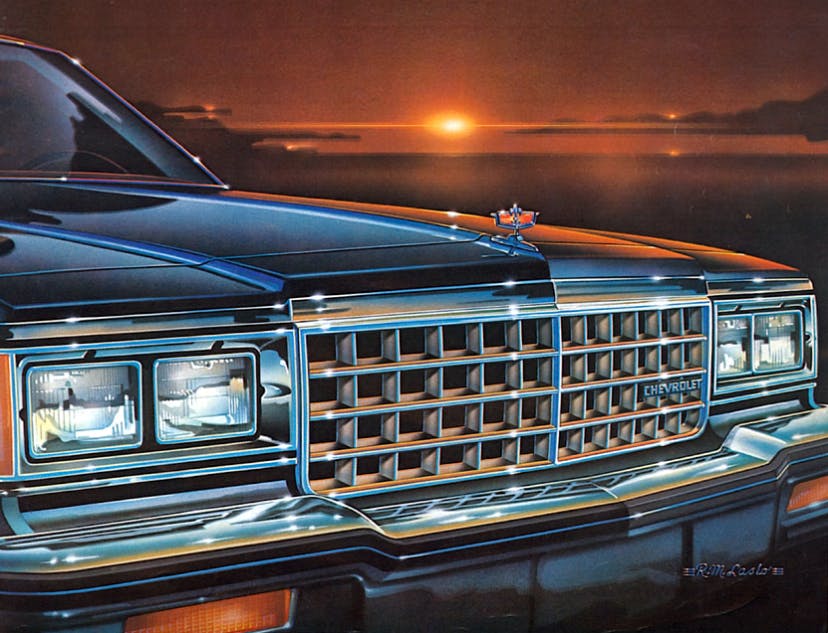When the B-body went from downsized progressive to full-sized traditionalist
The year was 1977 and things weren’t looking so rosy for Detroit’s Big Three. Safety and emissions concerns were both valid and troublesome, not to mention the seemingly endless issues with gasoline prices and availability. General Motors, the strongest of the three automakers, had a project in mind to turn the tide in their favor. Project 77 was its name, and its game was to forever alter the way fans of traditional American sedans saw their beloved rolling couches. The project’s mission was to revamp the longstanding B-body platform, downsizing it by roughly 10 inches in length and 800 pounds in heft. It was smaller on the outside, bigger on the inside, and far more fuel efficient. The all new (well, not so much under the skin) 1977 Chevrolet Impala and Caprice had a look to match the mission, and as the sales brochure said in a foreboding manner:
The handwriting was on the wall. It clearly said that the time had come for a new kind of six-passenger car–one that would be more efficient in its use of this earth’s space and materials than full-size cars of the past–one that would use a new standard engine that is smaller and more fuel efficient.
Quite a progressive statement from a supposedly static automobile manufacturer! Yes, this car was a gamble, made obvious in the Chevy sedan’s base 4.1-liter inline six when Ford’s LTD had a 5.8-liter small block V8 as standard equipment.
But the body’s messaging was clear; witness the front end’s deeply intense, furrowed brow glaring back at you. It elegantly transitioned to a rear with strong tapers and stunningly fast lines worthy of an Italian design studio. The 1977 Impala/Caprice clearly meant business, and it put the rest of Detroit on blast. This gamble worked as part of GM’s downsized portfolio, since sales were strong and, as The Complete History of General Motors states, they “grabbed a record 56 percent of new car sales”, while their stock went above $60 per share, and GM once again climbed to the top of the Fortune 500.
Perhaps it was okay for the Caprice (and Impala) to rest on their downsized laurels by 1980, letting cars like the Citation and Chevette carry the progressive motoring torch. That relaxation meant losing the intense front fascia for a more chill face featuring an egg crate grille with less texture and more swagger. The big B-body just looked happier in its new role by 1980, and it was well on its way to becoming the Chevy “Box” legend it is today. The irony of my (admittedly flawed) theory is that the “traditional” 1980 design was more aerodynamic and a full 100-lbs lighter than the “progressive” 1977 model. You can see the improvement in the nose, as frontal area was reduced from a shorter front fascia height.
No more obvious sign of the change happened than with the coupes. The 1977 two door Caprice/Impala had looked far sleeker, racier and perhaps more optimistic about the future than the staid 1980 redesign. Gone was the hot-wire-bent glass fastback, though the newer coupe’s upright C-pillar worked beautifully with a taller rear deck (shared with the sedan), squared off rear fascia, and chrome-rimmed, 6-pack taillights. That taller rear deck is a trait that regularly improves vehicle aerodynamics along with increasing cargo space, but one can’t help but wonder if the 1977 Coupe’s unique window coulda helped the 1980-up coupes cheat the wind with more precision.
The crew at Motorweek tested the not particularly progressive, properly traditional Caprice Classic for 1984. Noting this was the year of the coupe’s reintroduction (1983 was four-doors only), Motorweek also reminds us that this Caprice Classic has roughly double the fuel economy of the version sold 10 years ago. Progress marches on thanks to things like smarter electronics and overdrive transmissions, no matter how it looks from the outside.
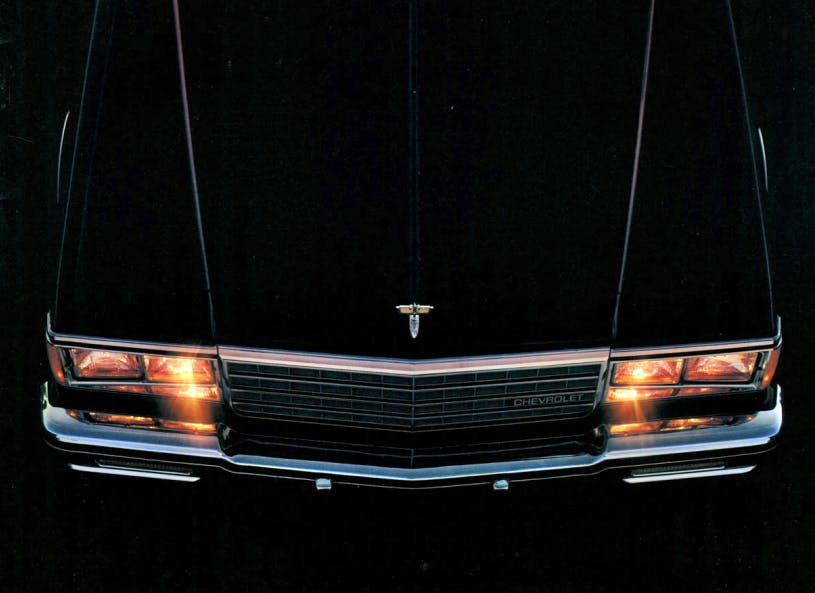
But you gotta admit, looking backward while moving forward has its benefits. The 1980s were a tumultuous decade in terms of car design, electronic advancements and a host of external socioeconomic forces, as cars like the GM B-body (and Ford Panther Chassis) reinvented themselves as the new home for traditionalists seeking comfort, low noise, and a wholly American driving experience. The hood may be shorter and more streamlined than yesteryear, but how much did the brand loyalist truly sacrifice in the 1980s? I reckon very little, in every aspect between its chrome bumpers.
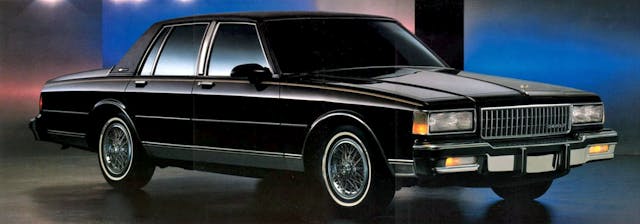
That said, at some point clinging to tradition makes you long in the tooth, and far out of step with your original vision. Adding a pair of flush headlights (1987) was the bare minimum of modernization, and it didn’t cut the mustard when Ford was hard at work brainwashing getting America’s heartland to embrace a front-drive moonshot of their own. Indeed the spirit of Project 77 was now a distant memory for GM’s B-body: The Impala died in 1986, and the Caprice Classic Brougham was now at the top of the food chain. The Brougham name clearly worked for Cadillac and their RWD Fleetwood, perhaps Chevrolet was looking for some of the same sales magic for the now repressive progressive?
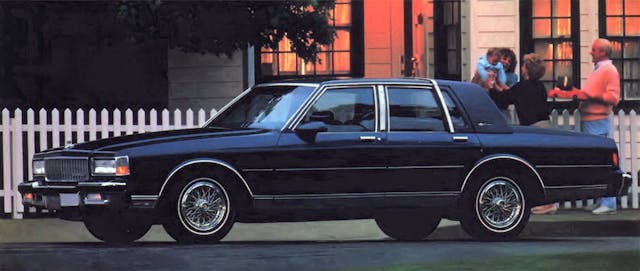
Later Caprice Classic Broughams came with an LS trim package, complete with the a padded quarter window not unlike those present on Cadillac Broughams optioned with the “Premier Formal Vinyl Roof” option. (This option became standard Cadillac Brougham fare in 1990 when it, like the Caprice, modernized itself to incorporate flush headlights). Squint real hard and the Caprice Classic Brougham LS still looks like that progressive from 1977, but is any of the original spirit intact? Then again, considering the gas prices of “morning in America”, did any full-size traditionalist care by this point?
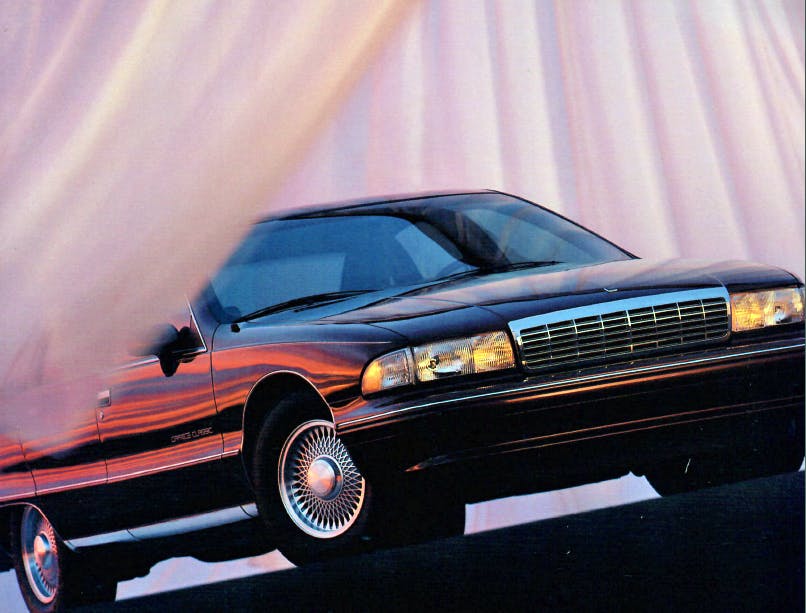
Perhaps that’s an irrelevant question, as automakers can’t rest on their laurels forever. Project 77 had legs, but it couldn’t survive the 1990s without a serious re-think. And Chevrolet certainly put their thinking caps on, unveiling something new in the form of the “bubble” Caprice. Much like the 1977 Impala/Caprice, it didn’t reinvent the wheel, but instead presented an extremely timely variation on a theme. The “bubble” Caprice has its backers to this day, but that’s truly a discussion for another day.

